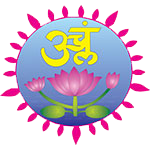
Achala Siddhantha
Over centuries, various philosophical thoughts have continuously evolved in our country. Achala Siddhantha comprehensively summarizes all these schools, presenting a holistic approach, and is therefore referred to as Samanvaya Yoga or integrated Yoga.
The term "Achala," derived from Sanskrit, holds diverse interpretations within a spiritual context. One common understanding is "immovable" or "unshakable." In spiritual and philosophical contexts, it often symbolizes a state of unwavering stability, stillness, and transcendence. The spiritual meaning of "Achala" is thus associated with finding inner calm and steadfastness amid the changing and often turbulent nature of the mind and our lives.
Achala Siddhantha is the philosophical school propagated by the Achala Guru Parampara through Tharka (logic), Vichara (analytical inquiry), and Anubhava (experience). "Achala Yoga" guides the sadhaka towards attaining a state of inner stillness and unshakable awareness. In this state, one's mind is not easily swayed by external circumstances, desires, or emotions. Instead, it embodies a sense of inner peace, equanimity, and spiritual grounding, which are crucial aspects of spiritual growth and self-realization.
- Achala Siddhantha advocates surrendering ego-driven desires and attachments to the feet of the Guru, leading to inner peace and acceptance.
- The ultimate goal is to cultivate inner silence or stillness. Contemplative meditation can help individuals quiet the constant stream of thoughts and opinions from the ego.
- Achala Jnana fosters non-attachment, liberating individuals from the ego's grip on material possessions, relationships, and outcomes, fostering a greater sense of freedom and equanimity.
Achala Siddhantha in the Indian Spiritual Spectrum
India, our motherland, has been the epicentre of spiritual evolution for mankind. Over more than 10,000 years, various schools of spirituality have emerged, broadly classified into Theistic and Atheistic groups. The six 'Shat-Darshans'—Sankhya, Yoga, Nyaya, Vaisheshik, Purva Mimansa, and Vedanta or the Uttar Mimansa—are the theistic schools accepting the authority of the Vedas. The two main atheistic schools, Jainism and Buddhism, do not acknowledge the authority of the Vedas. Within these major schools, several denominations offer diverse interpretations of the ultimate reality based on their unique logic.
The three major schools of Vedanta are Śaṅkara's Advaita, Rāmānuja's Viśiṣṭādvaita, and Madhva's Dvaita. Although all three trace their roots to the Upanishads, they differ in their views on the ultimate reality (Brahman) and the relationship between Atman and Brahman.
The Advaita asserts that the liberated Atman merges with the seamless Brahman, the only Reality, escaping the cycle of birth and death. On the other hand, both Viśiṣṭādvaita and Dvaita emphasize essential differences between Brahman and Atman, maintaining this distinction even in the realm of liberation.
Achala Siddhantha incorporates many concepts from Advaita but differs in the understanding of the self and the ultimate Brahman. The Self or consciousness in Achala Siddhanta is referred to as 'Yeruka,' serving as the creator and sustainor of the world of plurality.

